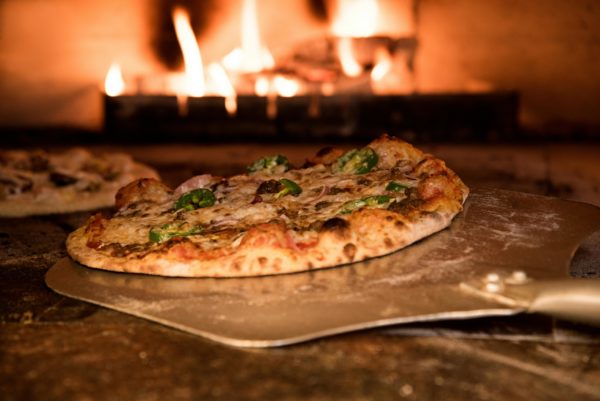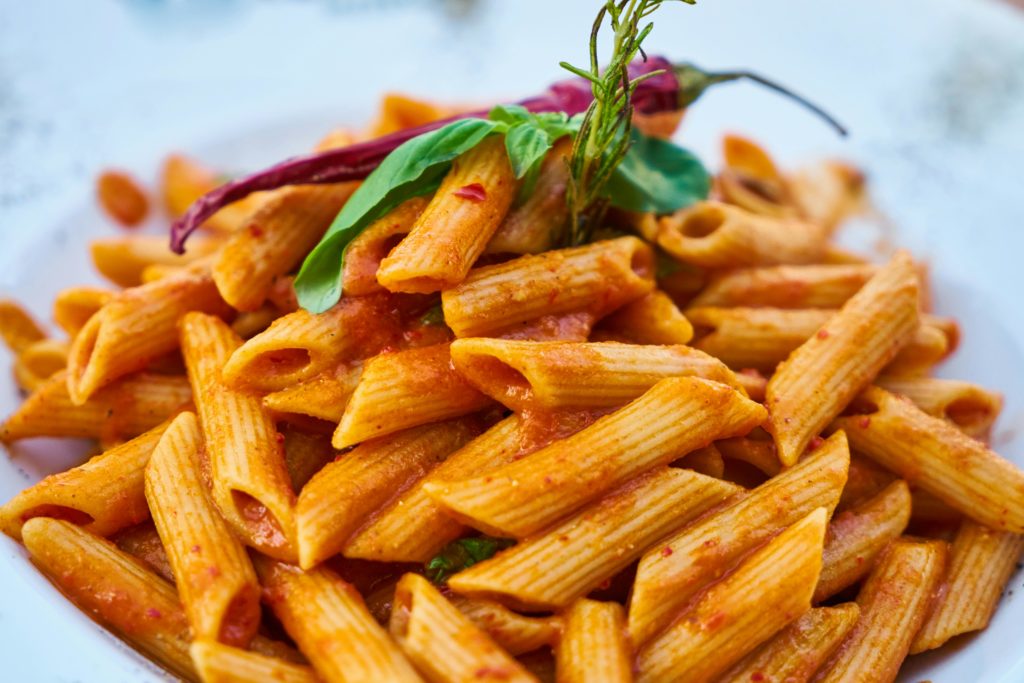The Ultimate Guide to Types of Gourmet Italian Food
Italy is a culinary wonderland, renowned for its rich gastronomic heritage that transcends mere nourishment, with an emphasis on quality, simplicity, and centuries of tradition. At the heart of it all, or more fittingly, in the center of the dinner table, is a remarkable assortment of gourmet Italian foods that delight palates globally. Ranging from sumptuous pastas and creamy risottos to delicate antipasti, delicious dolci, and the finest wines, Italian cuisine is a celebration of life’s pleasures.
In this immersive exploration, we’ll journey through the various culinary delights that define Italian gastronomy, offering a detailed look at different regional delicacies and traditional favorites. Whether you’re preparing for a gourmet Italian feast or simply eager to enrich your knowledge of one of the world’s most beloved cuisines, this comprehensive guide is sure to whet your appetite and leave you yearning for Italy’s flavorful dishes.
The Foundations of Italian Cuisine: Pasta, Risotto, and Pizza
When it comes to gourmet Italian food, few dishes are as internationally renowned as pasta, risotto, and pizza. These staples encapsulate the essence of Italian cooking—straightforward ingredients, expertly mixed with a dash of artistry. Let’s delve into each.
1. The Art of Pasta
Pasta is more than a simple carbohydrate; it is an art form. With over 600 shapes and names, pasta is as diverse as the Italian countryside. From the southern simplicity of Puglia, which offers a plethora of orecchiette and cavatelli, to the rich, stuffed pastas of the north, such as tortellini and agnolotti, the type of pasta often encapsulates the spirit of its region.
Tortellini en Brodo from Emilia-Romagna, Trofie al Pesto from Liguria, Orecchiette con Cime di Rapa from Puglia – the list is as abundant and varied as there are regions in Italy. Each variation is distinct, yet all share the common thread of being meticulously crafted to deliver flavors that transcend the dinner table.
2. Risotto: The Comfort Food King
Hailing from the North, particularly from Lombardy and Veneto, risotto is a creamy rice dish that offers a blank canvas for culinary creativity. Whether it’s the famous Risotto alla Milanese with saffron and bone marrow, or a robust Risotto ai Frutti di Mare filled with fresh seafood, this slow-cooked delight can adapt to any flavor profile, making it a versatile main course or a delightful side dish.
3. Pizza: From Naples to the World
Pizza, initially a humble peasant’s dish, has achieved legendary status across the globe. Originating in Naples, with its vibrant, charred crust and minimalist toppings, a true Neapolitan pizza must follow strict guidelines to earn its badge of authenticity. Meanwhile, the emergence of the Roman-style pizza, characterized by its thin, crispy crust, has further enriched the pizza-lover’s lexicon.
Whether it’s a classic Margherita, adorned with mozzarella, tomatoes, basil, and a drizzle of olive oil; a gourmet white pizza with creamy cheese and earthy truffles; or a calzone stuffed with meats and cheeses, Italian pizza is a cultural phenomenon.
The Art of Appetizers
The Italian meal starts not with the main course, but with an array of small dishes known as antipasti. These are designed to stimulate the appetite and offer a brief, delightful glimpse into the forthcoming meal.
1. Olive All’Ascolana
Originating from the town of Ascoli Piceno in the Marche region, these meat-stuffed olives are breaded and fried to golden perfection, offering a succulent, crispy bite that is impossible to resist.
2. Bruschetta
A platter of bruschetta should not be discounted for its apparent simplicity. Toasted bread rubbed with garlic and topped with a variety of fresh, seasonal ingredients such as chopped tomatoes, olive oil, and herbs, a bruschetta can be tailored to any taste and is perfect for sharing.
3. Caprese Salad
The Caprese salad, a signature dish of Capri, is a masterpiece in color and flavor—slices of ripe tomatoes, fresh mozzarella di bufala, fragrant basil, and a drizzle of extra virgin olive oil. It celebrates the Italian flag’s colors and epitomizes the very best of Italian produce.
The Italian Main Course
After the antipasti come the secondo piatti, or main courses. These can feature a wide array of meats, fish, and sometimes vegetables, and are often the heartiest part of an Italian meal.
1. Osso Buco
This famed Lombardian dish features braised veal shanks cooked with white wine, broth, and a variety of earthy aromatics, resulting in a tender, flavorful meat dish that is often paired with the iconic gremolata.
2. Saltimbocca
This classic Roman dish literally translates to ‘jump in the mouth’, and for good reason. Made with thin slices of veal, prosciutto, and sage, cooked in white wine and butter, saltimbocca offers a delicate balance of flavors and textures that delight the senses.
3. Involtini
Involtini typically refers to a dish where the meat is wrapped around a filling or rolled into a roulade. Often made with veal, eggplant, or fish, these rolls can be filled with a variety of ingredients such as cheese, vegetables, or cured meats, offering endless possibilities.
Pairing Italian Food with Wine
Wine is an integral part of an Italian meal and is often chosen to complement the flavors of the food. Italy’s diverse wine culture means there’s a perfect vino for every dish, from the reds of Tuscany to the whites of Friuli.
Red Wine with Pasta and Meat Dishes
Italian reds such as Chianti Classico and Barolo are robust and well-matched to the heartier flavors of meat-based pasta dishes and rich meats like beef and lamb.
White Wine with Seafood and Vegetable Dishes
The crisp acidity and bright fruit notes of Italian whites like Pinot Grigio and Vermentino are perfect for lighter fare, such as seafood pastas, risottos, and vegetable dishes.
Dessert Wine with Sweet Finishes
A meal concludes beautifully with a glass of Vin Santo or a sweet Moscato, which pairs delightfully with Italian desserts, providing a satisfyingly sweet finish to the meal.
Exploring Regional Cuisine
Italian cuisine is as much about regional diversity as it is about cultural unity. Each region of Italy boasts its own unique flavors and specialty dishes, often tied to geographic conditions and historical influences.
The North: Creamy Risottos and Hearty Polentas
From the buttery risottos of Lombardy to the hearty polentas of Friuli, the North’s cuisine reflects a colder climate with rich, comforting dishes that often include game meats, butter, and cheese.
Central Italy: Tuscany’s Stews and Rome’s Quintessential Dishes
Tuscan dishes, like the famed Bistecca alla Fiorentina, celebrate the simplicity of quality ingredients, while Rome’s cuisine excels in pasta dishes such as Cacio e Pepe and Carbonara, highlighting the flavors of pecorino cheese and guanciale.
The South: Neapolitan Pizzas and Sicilian Sweets
Southern Italy is home to some of the most iconic Italian dishes, with Neapolitan pizzas and Sicilian street foods like arancini and panelle, as well as sourcing ingredients for a variety of Italian cuisines.
Sumptuous Italian Street Food
While Italy is often associated with leisurely multi-course meals, its street food culture is equally vibrant and delicious.
Arancini
Crispy, golden rice balls filled with a variety of savory ingredients, arancini are a beloved Sicilian snack available throughout the country.
Panzerotti
Fried pockets of dough filled with tomato sauce and mozzarella, panzerotti hail from the southern region of Puglia and make for a delicious on-the-go treat.
Supplì
Similar to arancini but originating from Rome, supplì are rice croquettes with a surprise burst of mozzarella and ragu sauce that’s perfect for a quick bite.
The Role of Tradition in Italian Food
 The key to Italian gourmet food lies in the respect for tradition and the focus on fresh, high-quality ingredients. It’s a cuisine that honors the past while embracing innovation.
The key to Italian gourmet food lies in the respect for tradition and the focus on fresh, high-quality ingredients. It’s a cuisine that honors the past while embracing innovation.
The Importance of Seasonal Ingredients
Italian recipes are often adjusted based on what’s available in the season, with menus changing to reflect the freshest produce. This not only ensures taste and nutritional quality but also maintains the integrity of traditional dishes.
Celebrating Authenticity
The Italian government has gone as far as to regulate products like Parmigiano-Reggiano, Prosciutto di Parma, and others with Designations of Origin to protect the authenticity and quality of these regional specialties.
Passing on Techniques and Recipes
Family recipes and cooking techniques are passed down through the generations, ensuring that classic dishes are prepared with the same care and attention to detail as they have been for hundreds of years.
Italian Food and Sustainability
Sustainability has been a core part of Italian food culture long before it became a worldwide movement. Italian cuisine is a prime example of how the slow food approach can lead to delicious and eco-friendly dishes.
The Slow Food Movement
The Slow Food movement, launched in Italy, aims to preserve traditional and regional cuisine and encourage farming and food production practices that are good for the planet.
The Zero-Kilometer Concept
Many Italians embrace the zero-kilometer concept, sourcing their ingredients as close to home as possible to reduce the carbon footprint of their meals.
Eco-Conscious Agriculture
Italian farmers employ a range of sustainable farming practices, from organic farming to the careful preservation of heirloom seeds, ensuring the future of the country’s rich culinary biodiversity.
Fine Dining Italian Restaurants in Toronto
Via Allegro Ristorante is a heralded gem in Toronto’s dining scene, renowned for its exquisite blend of traditional Italian recipes and contemporary fine dining. With an impressive collection of awards, including multiple awards, this restaurant offers patrons a luxurious ambiance complemented by an expansive menu that showcases the very best of Italy’s culinary wealth. From expertly crafted pastas to sumptuous meat courses, each dish is a testament to the chefs’ commitment to flavour and quality. Get directions to our Italian restaurant in Toronto.

